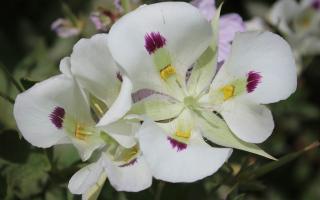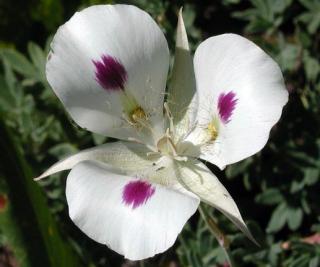White Mariposa Lily (Calochortus eurycarpus)

By Gene Yates
Often found in masses, white mariposa lily provides a striking foreground standing proud among the grasses and herbs of mountain meadows, grasslands, and open forest throughout the intermountain west.
A member of the lily family, white mariposa lily grows from a perennial bulb with a single grass-like stem up to 20 inches (50 cm) tall bearing 1-5 flowers. The flower features three large white petals each with a prominent purple blotch in the center. Near the base of each petal a small, yellow, crescent-shaped gland attracts beetles by secreting a nectar-like substance. However, mariposa lilies are believed to be pollinator “generalists” and attract a variety of insects including bees, wasps, bee-flies, in addition to several kinds of beetles. White mariposa lily blooms from late May through July, depending on local conditions such as elevation and aspect.
White mariposa lily is difficult to cultivate either by seed or bulb and is not suited for the home native plant garden.
For More Information
PLANTS Profile - Calochortus eurycarpus, White Mariposa Lily


